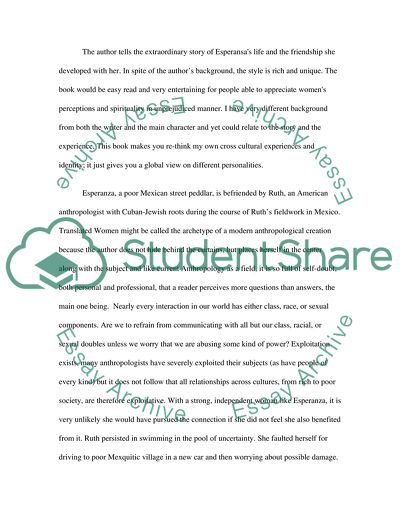Cite this document
(“Book Review of Translated Woman by Ruth Behar Essay - 1”, n.d.)
Book Review of Translated Woman by Ruth Behar Essay - 1. Retrieved from https://studentshare.org/literature/1507948-book-review-of-translated-woman-by-ruth-behar
Book Review of Translated Woman by Ruth Behar Essay - 1. Retrieved from https://studentshare.org/literature/1507948-book-review-of-translated-woman-by-ruth-behar
(Book Review of Translated Woman by Ruth Behar Essay - 1)
Book Review of Translated Woman by Ruth Behar Essay - 1. https://studentshare.org/literature/1507948-book-review-of-translated-woman-by-ruth-behar.
Book Review of Translated Woman by Ruth Behar Essay - 1. https://studentshare.org/literature/1507948-book-review-of-translated-woman-by-ruth-behar.
“Book Review of Translated Woman by Ruth Behar Essay - 1”, n.d. https://studentshare.org/literature/1507948-book-review-of-translated-woman-by-ruth-behar.


